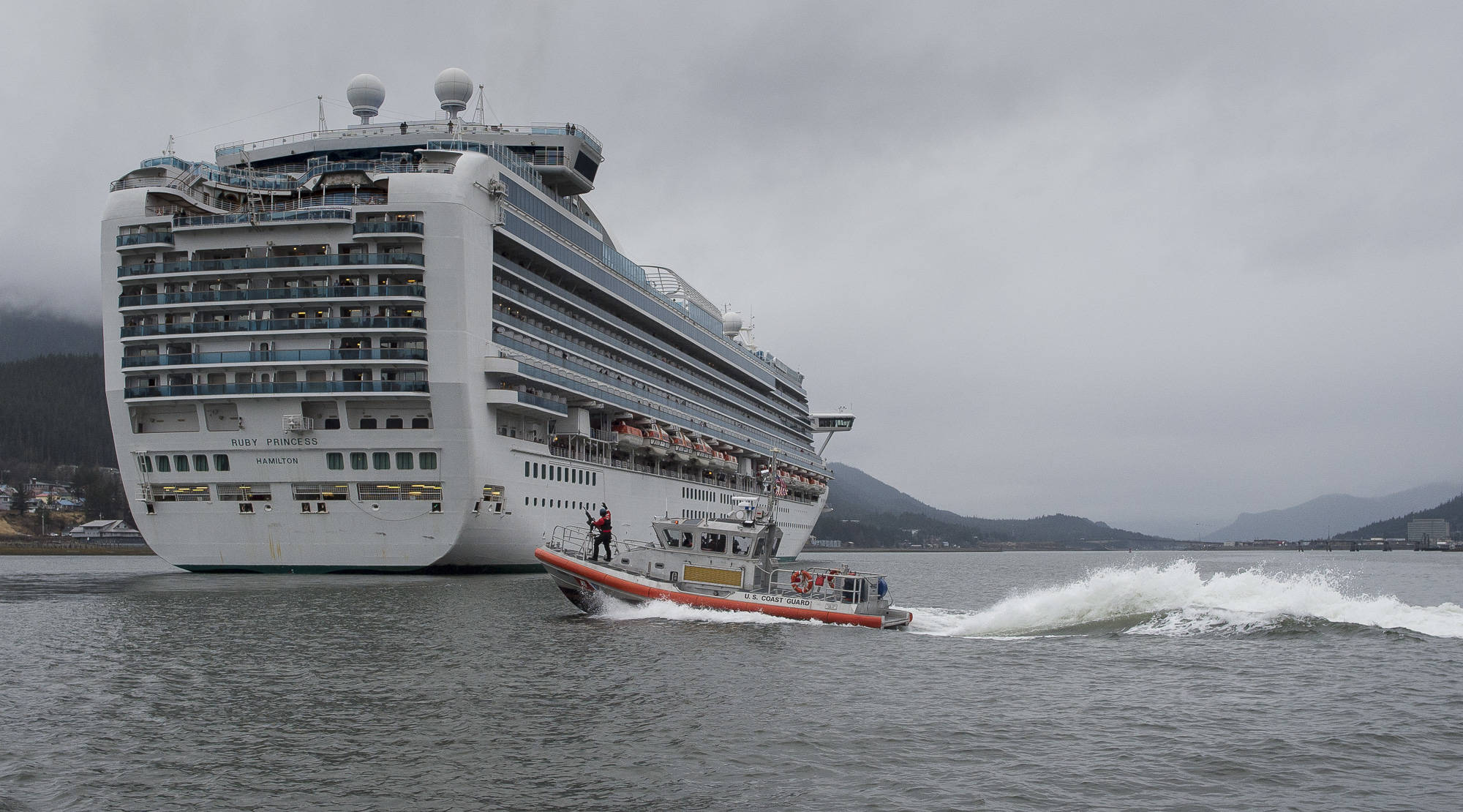This is a three-part series on how first responders, Coast Guardsmen, and the medical community in Juneau treat tourists aboard cruise ships who become sick or injured while visiting. See the next part in the series in Wednesday’s newspaper.
Every year, more than a million people visit Juneau, mostly by cruise ship. With any group of humans over any period of time, illnesses and accidents occur. Most of the cruise ships have perfectly capable medical staff, said Capt. J. Russell Bowman, a senior Coast Guard medical officer, and they can handle most of the colds and mild injuries that occur.
But when a passenger has a stroke, or a major fracture of a critical bone, or any other affliction involving long term, specialized medical care, it can get a little more complicated.
“They make the determination if the injury or medical problem requires a higher level of care,” said Lt. Brian Dykens, a Coast Guard officer. “We’ll take the request, get all the info we can, and talk to duty flight surgeon, and they’ll make a recommendation of whether they recommend if we make a medevac or not.”
Juneau Station has performed 23 medevacs since last October, including six off of cruise ships. Two of those happened in the past two weeks. The first was when a passenger had a heart attack on Aug. 15. The onboard doctor was able to stabilize the patient, but they required further care that needed a specialist. The second involved a passenger suffering a severe allergic reaction on Aug. 22.
“A significant injury or illness, that’s where we come in to action,” Dykens said.
In both cases, Coast Guard Station Juneau deployed its 45-foot Response Boat-Medium to medevac the passenger from the Norweigian Bliss to Don D. Statter Harbor in Auke Bay, where Capital City Fire/Rescue personnel assumed care of the patient.
“With the Bliss, the recommendation was that they come close enough that we could use our small boat to pick them up and get them safely into town,” Dykens said.
Southeast Alaska has a number of medevac-capable options, from its response boats here in Juneau to the three SH-60 Jayhawk helicopters stationed at Air Station Sitka. All of them can perform rescue, provided the weather conditions aren’t dangerous.
“Hoisting someone off the deck is a very risky operation,” said Bowman.
The choice of asset — and the decision to deploy at all — depends on the window of stability the patient has before permanent harm or death is likely, said Bowman. When the Coast Guard gets a medical emergency call, the on-duty flight surgeon, a naval medical officer, will talk to the doctor aboard the cruise ship, and determine patient’s status, and how quickly the patient needs to get to a higher level of medical care.
Keeping it all in the air: How does Juneau handle all its air traffic?
The flight surgeon will talk to the search and rescue mission coordinator (SMC), and advise them whether they recommend a medevac from a medical point of view. The SMC will make the final call to deploy a medevac, said Dykens.
CCFR also plays a role, with EMTs sometimes riding along with the response boats to provide in-transit medical care, said Dykens. All Coast Guardsmen are trained in emergency first aid, but not for more intensive care.
Vying for Glory: These Olympic-style games make Coast Guard training fun
When the medevac gets back to the pier or the air station, personnel on the ground will assess whether to transport them to somewhere like Bartlett Regional Hospital or to evacuate them to somewhere like Seattle or Anchorage, if the window of best results will allow, said Bowman.
All of this activity in this region is coordinated through the Coast Guard’s 24/7 command center here in Juneau. The command center gets the call, alerts the crews, coordinates with CCFR and BRH, and if further transport is required, they line that up too.
Photos: Coast Guard competes in Buoy Tender Olympics 2019
“Coordination and communication between all these partners is key to maintaining the safety of the patient,” said Dykens, lauding the partnership between the Coast Guard, CCFR and BRH, as well as all the other agencies who pull together to make these evacuations possible.
And is it difficult, transporting an immobilized patient from one moving ship onto another moving vehicle at sea?
“We make the abnormal look normal,” Bowman said.
• Contact reporter Michael S. Lockett at 523-2271 or mlockett@juneauempire.com.

